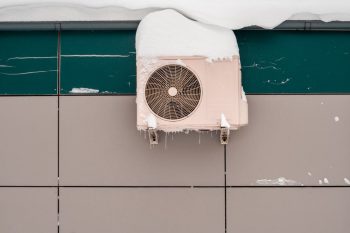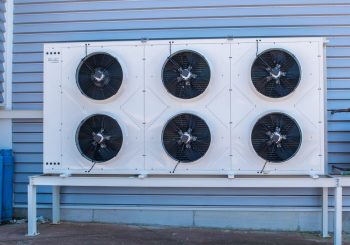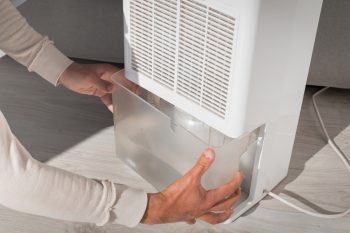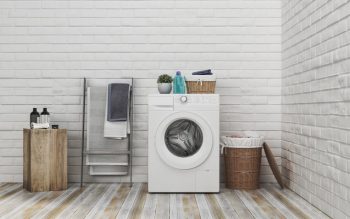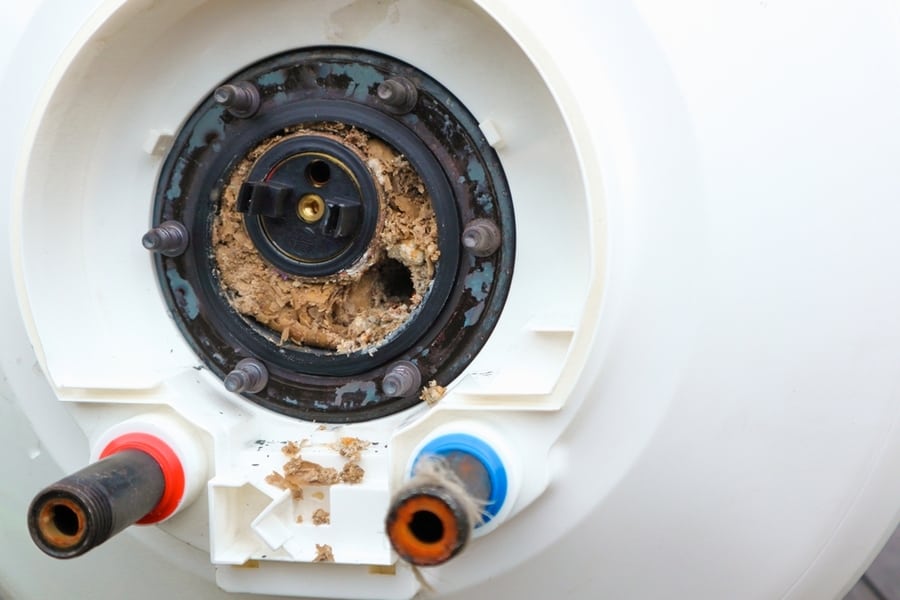
Do you ever open the hot water tap in your kitchen and find sand flowing out along with the water? You might often find it disgusting as sandy grit is not a sign of clean water in your kitchen tap.
Well, you might feel relieved as this sand is not anything contaminated. It is simply the pieces of sediments that have formed on the bottom of your water heating unit now flowing with the water.
Although sediments are not contaminated and are just some accumulated minerals, they can still make the water almost undrinkable for you. Moreover, sedimentation can be very dangerous to the water heating unit.
It can cause the hot and cold water to mix in the water heating tank, thus making all water cold. It also acts as an insulating layer around the water heating tank, thus blocking the heat from reaching the center of the heating tank.
Thus, it will reduce the heating unit’s efficiency to achieve the desired hot water temperature. The bits of accumulated sediments can also block the water pipes and valves, causing pressure buildup and leakage in the water heating unit.
Finding sediments in tap water can be a frustrating thing. Although sediments do not dirty your water, they must be checked and removed.
The main reasons why you find sediments in the water heating unit are:
- Hard water problem.
- Not flushing the water tank.
- Not cleaning the tank.
- Incorrect temperature setting.
- No water filter was installed.
You can check for signs of sedimentation to clean your water heating tanks on time and avoid any problems in the future.
This article will discover 5 main reasons that can cause sedimentation in your water heater. You will also find ways to remove the sediments from the bottom of your water heater.
5 Reasons for Sediment Buildup in Your Water Heater
Sedimentation is one of the main reasons behind the breakdown of your water heater. To resolve the issue of sedimentation, you will first have to identify its causes.
Below, we have identified and explained 5 of the most common reasons that can cause sedimentation in water heating tanks:
1. Hard Water
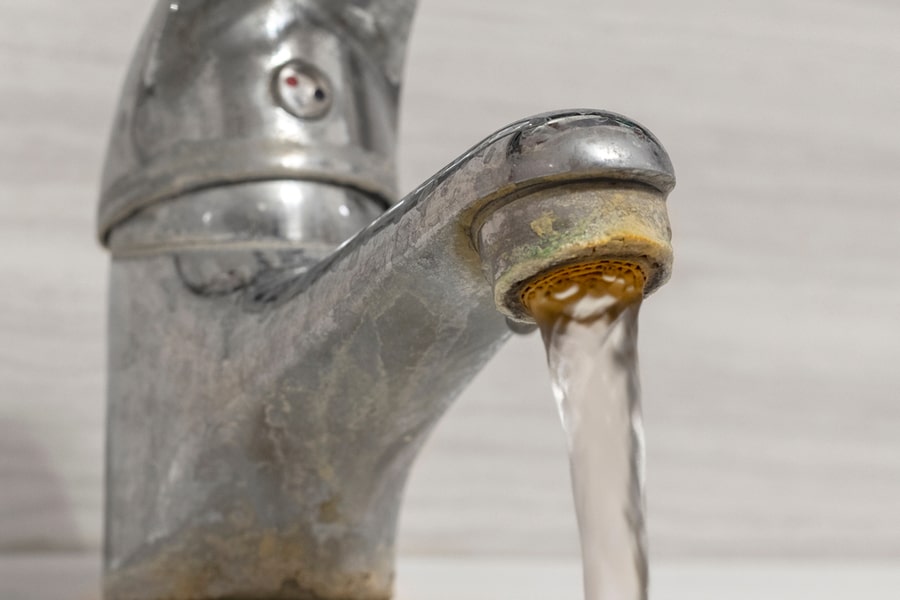
Many households in the world face the problem of hard water. Hard water contains a high level of minerals in it.
The main culprit is calcium carbonate. Hard water can produce a large volume of calcium carbonate sediments when heated at a high temperature. These sediments can separate from the water and settle in the bottom of the water heater.
Over time, these sediments will accumulate and create multiple solid layers of calcium carbonate crystals on the walls and bottom of the heating unit. This will lead to sedimentation.
Solution
The problem of hard water can be treated by using water softeners. Water filters can also help to eliminate the problem of sedimentation.
A water softener is a device that converts hard water into soft water. It works by removing the mineral ions from the water. These mineral ions include magnesium and calcium ions and can make the water hard.
The water softening unit will collect and replace these ions with sodium ions. As the harmful ions are collected and removed, there will be no more precipitation in the heating tank, and it will stay the same from the damages caused by sedimentation.
Water softening units are pricey. However, as they solve a big problem, they are considered a worthy investment.
They can save you big money in the long run and also increase your satisfaction level.
2. Not Flushing the Water Tank
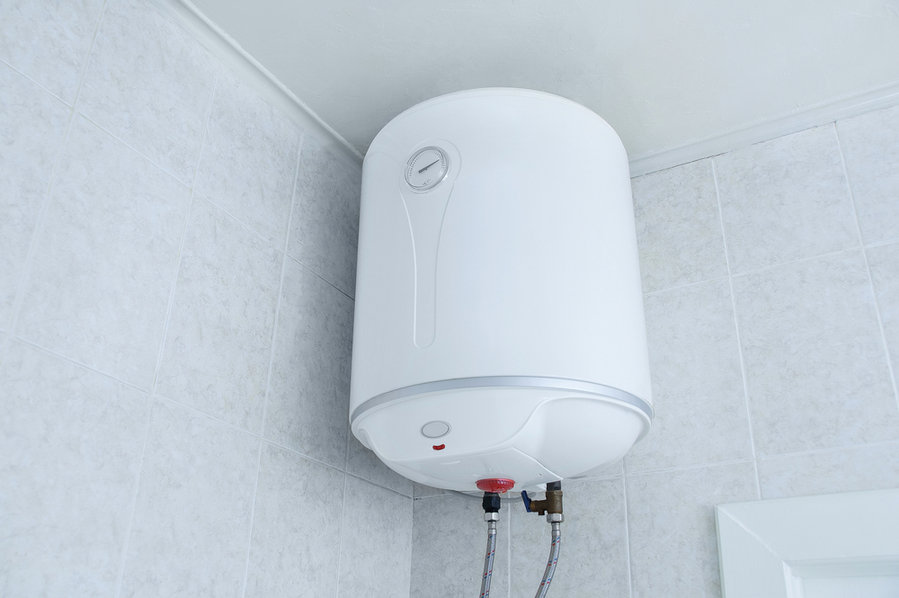
As sediments keep building in the water heating tank and are not removed, they can cause a huge problem. Not flushing the water tank means leaving the sediments in the water tank, which are taking up the most space there.
This will also affect the heating capacity of your water tank.
Solution
Flushing your water heating unit is an easy and effective way to prevent sedimentation buildup. Flushing the water tank is a very important task. You will need to flush the water tank in the water heater at least twice yearly to prevent the accumulation of minerals.
You can flush your water heating unit by following the step mentioned below:
- Turn off the electricity or gas supply of your water heating unit.
- Turn off the household water supply to your water heater.
- Remove all the water from the heating tank by opening a hot water tap.
- Once the tank is empty, add the tank with cold water halfway to the center.
- Keep the tap open to let the cold water take the sediments away.
- Repeat the process until the water comes clear without grainy sand particles.
- Put your water heater back to working by turning on the heating element.
Flushing removes any agitated minerals from the tank and pipes, making them clean.
3. Not Cleaning the Tank

Like all other containers, the hot water tank will also require proper maintenance and regular cleaning to work at its best.
Most of the time, alone flushing will not be enough to remove the existing sediments from the water heating tank. You will need to clean all the already accumulated sediments from the tank to restore its working capacity.
Not cleaning the tank will also cause more sedimentation layers to form, worsening the problem.
Solution
We all know vinegar as an all-rounder in cleaning tasks. Besides washing burn stains from your microwaves, vinegar can also help clean sedimentation from your water heating tank. All you need to do is drain the water heating tank and soak it in an abundance of white vinegar.
Let your water heater soak in the vinegar for around 8 hours. Drain the vinegar and flush the water tank several times to remove the remaining drops.
This will remove all the sediment particles and give you a nice clean water tank.
4. Incorrect Temperature Setting
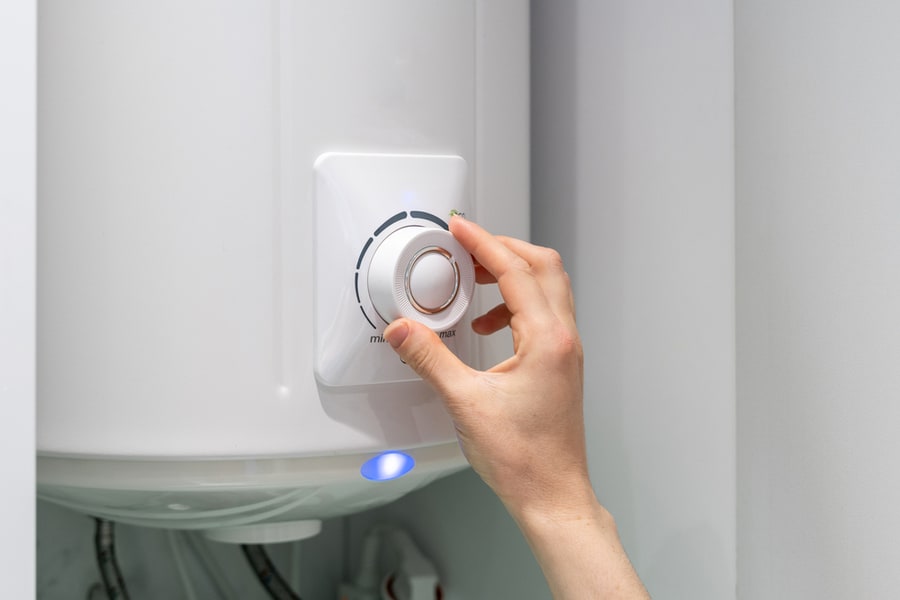
Setting the right temperature for your water heater is also very important. If your thermostat is in a very high-temperature setting, it can result in more sedimentation and hence more problems.
The best temperature setting for your water heater is 120 degrees Fahrenheit. Temperature beyond this range will cause the minerals to separate and agitate, resulting in a huge volume of sediments.
Solution
Try not to set your water heater at a very high temperature. Check your water heater’s manufacturing guide to look for the best temperature setting for that specific model.
Most water heaters usually suggest 120 degrees Fahrenheit as the optimal temperature setting.
If the temperature exceeds the said range, it can cause huge scale buildups and give the right condition for the minerals to turn into solid sediments.
The buildup of sediments will have a direct relation with the temperature. It means the higher the temperature from the optimal setting, the more sedimentation will occur.
5. No Water Filter

Water filters help remove any minerals and unwanted material from the water and clean it. Most people prefer applying filters only for drinking water.
However, bigger filtration units can also e used to filter the water for mineral deposits for all household use.
The absence of a water filter will keep the incoming water still loaded with unwanted minerals and lead to huge chances of sedimentation problems.
Solution
Although a water filtration system may cost you a high price, it can be very useful in the long run. Since the incoming water will be cleaned of undesirable minerals, it can minimize the chances of sedimentation in your water heating tank.
This practice will save your water heater a huge workout. Not only will it increase its efficiency, but it will also elongate its lifespan.
How Can I Tell if My Water Heater Has Sedimentation Problem?

It is the wish of all homeowners to increase the lifespan of all their household appliances. Nobody wants to install an expensive fixture in their home and find it dead the next month. We all want our lives to run smoothly and avoid any unwanted problems.
There can be many problems with your household appliances that can make your life miserable at some point. Imagine waking up on a cold frosty morning and finding your water heater out of order! That is scary, for sure.
To detect the problems early and fix them at the right time, you must know how to detect them. Below, we have enlisted 7 major indications that tell if your water heater is in the process of building sedimentation.
These indications will help you resolve the issue promptly and avoid any inconvenience.
- High Bills – If your water heater operates on gas or electricity, you will incur high energy bills. As sedimentation reduces the water heating unit’s efficiency, it will require more energy. This will cause more consumption of gas or electricity and hence higher bills.
- Weird Noises – If your water heater is making weird loud noises, such as popping or hissing, it can indicate sedimentation. Since the insulating layers of sediments are trapping the heat, the layers will make a popping sound at high temperatures, which can be easily heard.
- Unclean Water – If you open the hot water tap and receive some rusty-colored water drops first, it indicates sediment buildup. Since sedimentation can cause corrosion of the metal tank underneath, any form of sand grains, cloudiness, or color in water can give you an idea of what is happening inside the tank.
- Difficulty Warming Up Water – If you keep increasing the temperature setting on the thermostat on the water heater but still get only lukewarm water, this can indicate sedimentation. Since the sediments act as an insulating layer, they will prevent the heat from warming up the water and only give average results.
- Fractured Water Tank – Since sediments do not allow water to heat up quickly, it will cause the water tank to overheat. Cracks and fractures can result in the heating tank due to this sedimentation issue. If you find any water puddles under the water heating tank, it means there is a sedimentation problem.
- Faulty Valves – As the grains of sediments can travel along with the water and even settle in the pipes and valve junctions, this can lead to faulty or leaking pressure valves. Besides repairing your valves, you will also need to pay attention to the water heating tank and eliminate sedimentation.
- Low Water Flow – Sediments can clog and block the water taps and pipes, making it difficult for water to pass through them. Therefore, we recommend you check and flush your water heating tank to overcome this problem.
Conclusion
Sedimentation of water heaters is one problem leading to many other major problems. You will need to look for signs of sedimentation in your water heating unit to cure the problem at the right time.
Sedimentation of water heaters can occur due to hard water problems in your area. If you do not regularly flush and clean your water tank, sediment buildup will occur.
Moreover, incorrect temperature settings on the thermostat can also cause tank sedimentation. By installing a water softening unit or filtration system, the problem of sedimentation can be prevented.
Frequently Asked Questions
How Can I Flush My Water Heater?
To flush your water heater tank, you must first empty it. After that, you will need to run cold water through the tank until the water comes out clean and no more sandy grit can be found.




